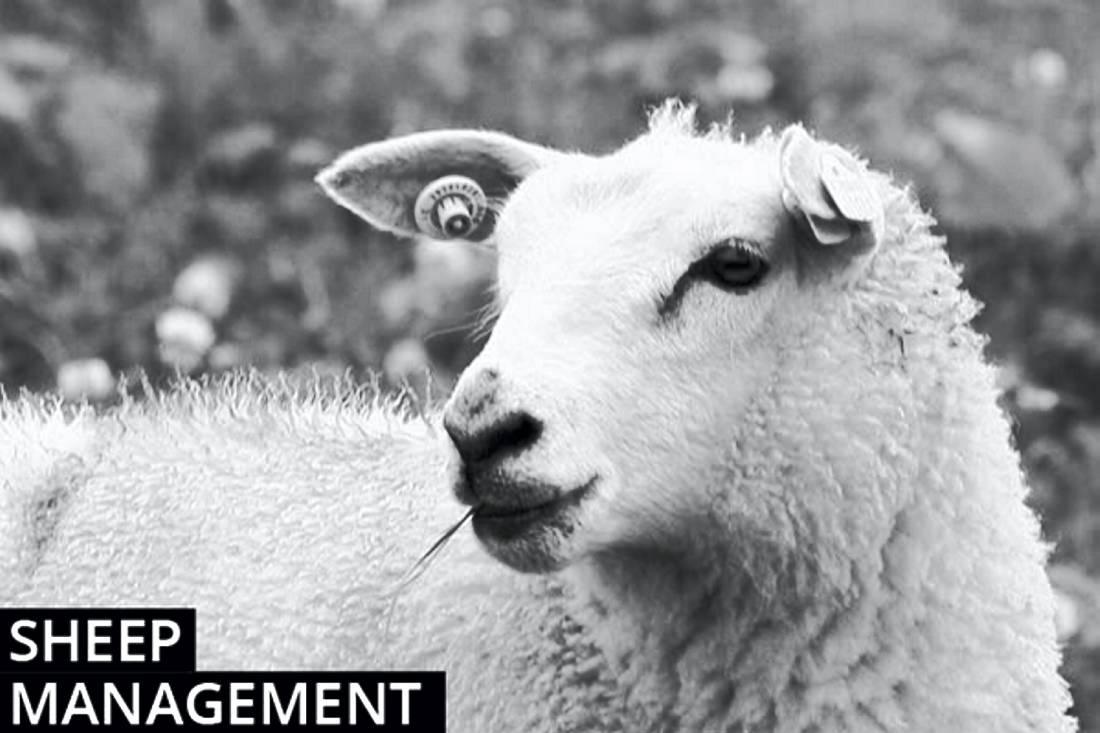Silage eye: The difficult weather conditions have led to supplementation being introduced in greater frequency in recent weeks. Some farmers have reported cases of ewes contracting sore eyes and temporary blindness. The cause is likely to be silage eye or what in veterinary is termed ocular listeriosis. It is generally associated with sheep eating mouldy silage and in particular where animals are eating in close contact at a round feeder or burrowing their heads into round bales. It can also spike in cold, windy conditions (silage blowing into an animal’s eyes).
Animals will appear with watery eyes that have a cloudy appearance on closer inspection. Eyes are also often swollen or closed. Veterinary advice is highly recommended as if left untreated it can lead to long-term blindness. Veterinary treatment generally includes administering antibiotic and anti-inflammatory injections into the tissue around the eye. Take care if using anti-inflammatory injections without veterinary advice as incorrect administration can lead to abortion in pregnant ewes. The disease risk can be reduced by avoiding feeding mouldy forage, cleaning feeders regularly and not letting excessive forage build up and go stale. This approach will also help to limit the risk of listeriosis.
Clostridial vaccine: The recommended time frame to administer a clostridial disease vaccine to achieve maximum passive immunity to lambs through colostrum is four weeks pre-lambing. If there is a significant spread in lambing (ewes followed by hoggets or ewe lambs, for example), it is beneficial to split animals into group treatments to achieve the optimum administration time frame of four to six weeks pre-lambing. Where animals have not previously received a full course of vaccination (two shots, four to six weeks apart), or it is greater than 12 months since their booster vaccine, a full course consisting of the two treatments will need to be administered.
Monitoring abortion: Ewes can abort from natural causes (death of a foetus) or where the environment they are in is leading to issues (overcrowding at feeding troughs leading to hurts, etc). However, due to the severity of disease-related abortions, it is important to treat every case as a potentially more serious threat and take necessary precautions, including isolating ewes and aborted material. Alarm bells should sound where the incidence is greater than 2%. In response, aborted materials should be submitted to a laboratory as soon as possible (fresh material will improve diagnosis rate) to determine the cause with a control plan implemented with your vet.
Quality Assurance: Last week’s feature containing advice on passing a quality assurance audit has generated some discussions with recording of veterinary medicines and in particular the preference to have individual veterinary treatments recorded and correlated with an animal’s tag number coming under the spotlight. The article omitted information on applying for entry into the scheme. This can be done by downloading an application form on the Bord Bia website at www.bordbia.ie, emailing info@agridata.ie or through your local factory.






 This is a subscriber-only article
This is a subscriber-only article










SHARING OPTIONS: